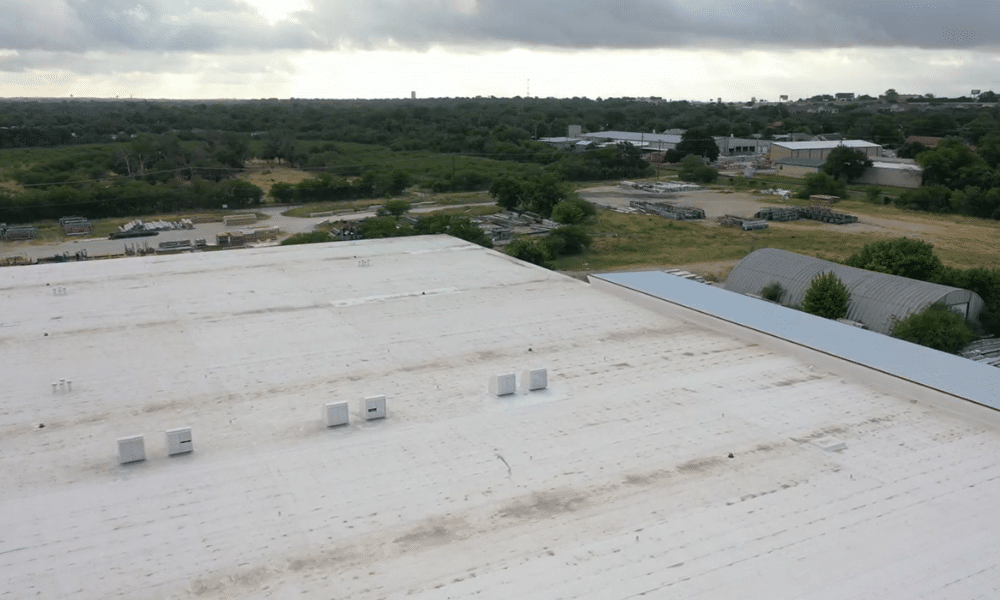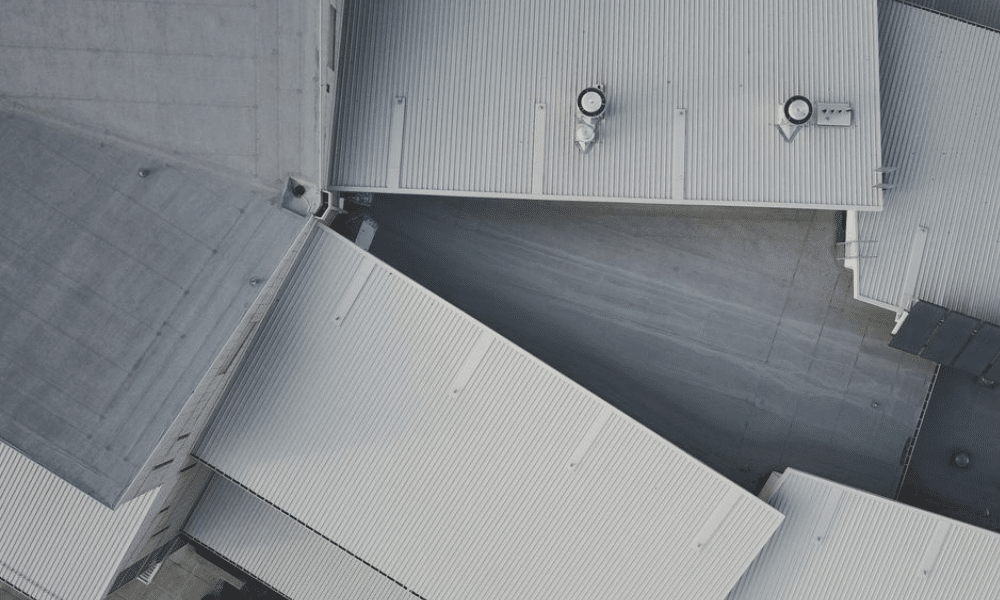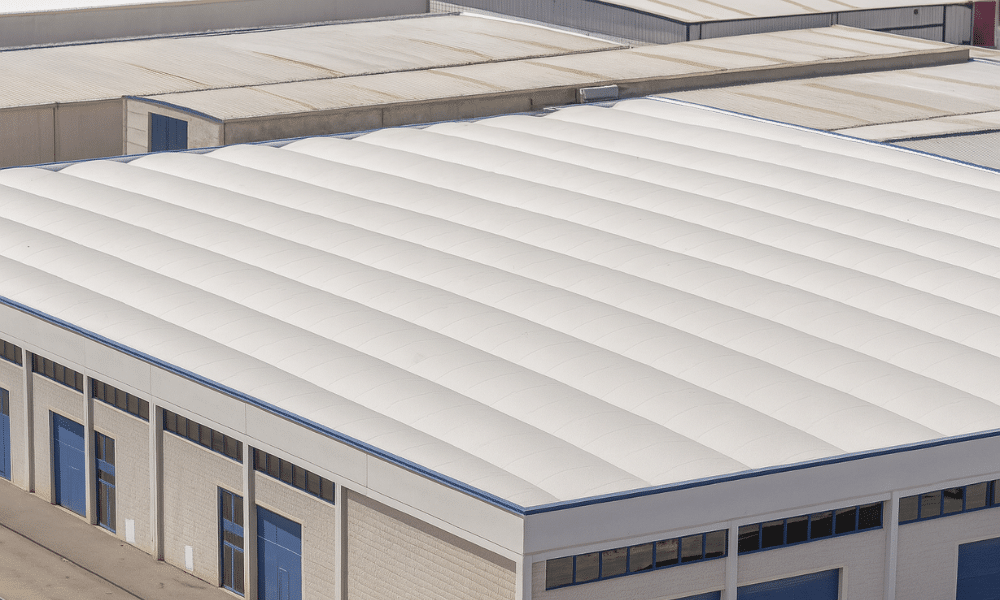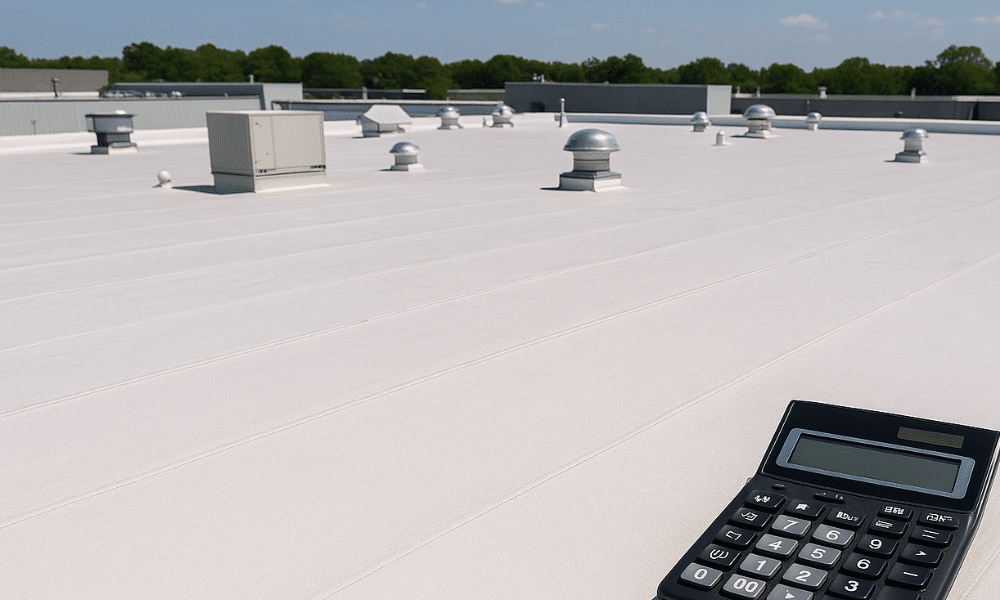
Summary Highlights:
- Wind uplift is a leading cause of roof failure in commercial buildings during storms.
- It begins when air pressure builds underneath the roofing membrane or panels.
- Improper installation, poor adhesion, and edge failure make buildings more vulnerable.
- WaterTight Roofing inspects, repairs, and secures roofs to withstand high wind loads.
What Is Wind Uplift and Why Does It Matter?
As commercial roofing experts in Texas, we've seen firsthand how high winds don't just blow over trees—they compromise roofs in a way that isn't always immediately visible. Wind uplift is one of the most common yet misunderstood causes of storm-related roofing damage.
In simple terms, wind uplift happens when the air pressure underneath the roof is greater than the pressure above it. This pressure imbalance pulls the roofing system upward, potentially loosening seams, lifting panels, tearing membranes, or removing the roof altogether.
At WaterTight Roofing, we work with property owners every year after storm season to repair commercial roofs damaged by wind uplift. Let's take a closer look at how it happens, what to look out for, and how to prevent it.
How Does Wind Uplift Occur on Commercial Roofs?
Commercial roofs—especially low-slope and flat systems—act like large surfaces that catch wind. As air flows over the roof during a storm, it creates a suction effect (known as negative pressure). If the roof membrane or metal panels aren't properly secured, wind can enter beneath the surface and begin to lift.
Here are the most common areas where wind uplift occurs:
Roof edges: Where the membrane terminates or flashing is installed
Perimeter corners: Areas with increased turbulence and uplift pressure
Penetrations: Around HVAC units, skylights, and vents where seals may break
Parapet walls: Wind can create a vortex effect behind these architectural features
Deck seams or underlayments: Especially if the adhesive or fasteners are failing
What Are the Warning Signs of Wind Uplift Damage?
You might not always see a roof blow off, but the early signs of wind uplift are often present after storms. Here's what we look for during inspections:
- Bubbling or rippling in the membrane (TPO, PVC, or EPDM)
- Detached or flapping sections near the edge or parapet
- Metal roof panels with missing fasteners or gaps
- Water infiltration without visible punctures
- Damaged flashings, base sheets, or termination bars
- Lifted roof insulation or gaps between layers
If left unaddressed, these issues can rapidly progress into major failures, especially with repeated wind exposure.
Why Is Wind Uplift So Dangerous for Flat Roof Systems?
Flat and low-slope roofs rely on adhesion, ballast, or mechanical fasteners to stay anchored. Unlike sloped residential roofs that benefit from gravity and shingles, commercial roofs are essentially large, smooth platforms. This makes them especially vulnerable to wind-related suction forces.
Moreover, when uplift compromises even a portion of the roof, water can enter and saturate insulation, corrode metal decking, and weaken structural support—all without any immediate visual clue.
For commercial buildings housing offices, warehouses, or retail inventory, this leads to:
- Interior water damage and mold growth
- Electrical system hazards
- Increased utility costs due to lost insulation value
- Business disruption from emergency repairs
At WaterTight Roofing, we're more than just a commercial roof restoration company—we're your long-term partner in storm preparedness and recovery. Our team is trained to identify hidden wind damage, document it for insurance purposes, and implement durable, energy-efficient restoration solutions that protect your property from future storms.
How Can You Protect Your Commercial Roof from Wind Uplift?
At WaterTight Roofing, we help clients prepare for and prevent uplift damage before the next big storm. Here's what we recommend:
Schedule Routine Roof Inspections: We assess the strength of your roof's seams, fasteners, edge flashing, and overall structural integrity. Preventative inspections help identify vulnerabilities long before storms hit.
Reinforce Perimeter Flashings and Terminations: These are the most uplift-prone areas. Our team can install reinforced edge metal, apply additional sealants, or upgrade flashing designs to resist wind pressure.
Upgrade to High-Wind-Rated Systems: Modern TPO and metal roofing systems offer enhanced wind uplift resistance. We can recommend the right materials based on your region's wind zone and building type.
Consider Roof Coatings and Adhesive Enhancements: Elastomeric coatings or additional adhesive applications can add cohesion to aging membranes and prevent peeling back during high winds.
Keep Records for Insurance: In the event of storm damage, documenting roof condition and maintenance history helps support your claim and ensures faster response.
How Does WaterTight Roofing Help With Uplift Repairs?
When you call us for a post-storm roof inspection or repair, our team acts fast. We bring specialized equipment to detect wind-related weaknesses and offer both emergency and permanent solutions.
- Emergency tarping to prevent further damage
- Resealing of membrane edges or panels
- Insulation replacement and drying
- Full roof system restoration or replacement
- Insurance documentation and adjuster coordination
If your commercial property has recently experienced strong winds, or you're starting to notice loose flashing, lifted membrane edges, or unexplained leaks, it's time to act. Even if there are no visible problems, the threat of wind uplift and internal pressure changes may already compromise your roofing system. These hidden issues can worsen, leading to extensive water intrusion, structural damage, and inflated repair costs.
The cost of delaying roof repairs after wind damage is often far greater than most building owners anticipate. Small areas of uplift can quickly expand with each new storm, moisture can seep into insulation layers, and seams can deteriorate faster under tension. Ignoring these early signs doesn't just risk your roof—it risks your entire operation.
At WaterTight Roofing, we understand how strong winds compromise commercial roofs, especially flat and low-slope systems. Our expert team is trained to identify subtle but critical signs of damage—like membrane separation, edge curling, fastener shifts, and hidden insulation displacement—long before those issues become leaks or safety hazards.
Don't wait for the next storm to make things worse.
Schedule a wind damage inspection with WaterTight Roofing today by calling 888-809-9976. We'll evaluate your roof thoroughly, provide a clear plan for reinforcement or repair, and ensure your building, tenants, and investment stay protected. Your roof may not be visibly failing—but the wind may already be working underneath it. Let's fix that together.
FAQs About Commercial Roof Restoration
Blog subscribers get new resources and how-to guides delivered via email.
Your Business Relies On Staying Dry





